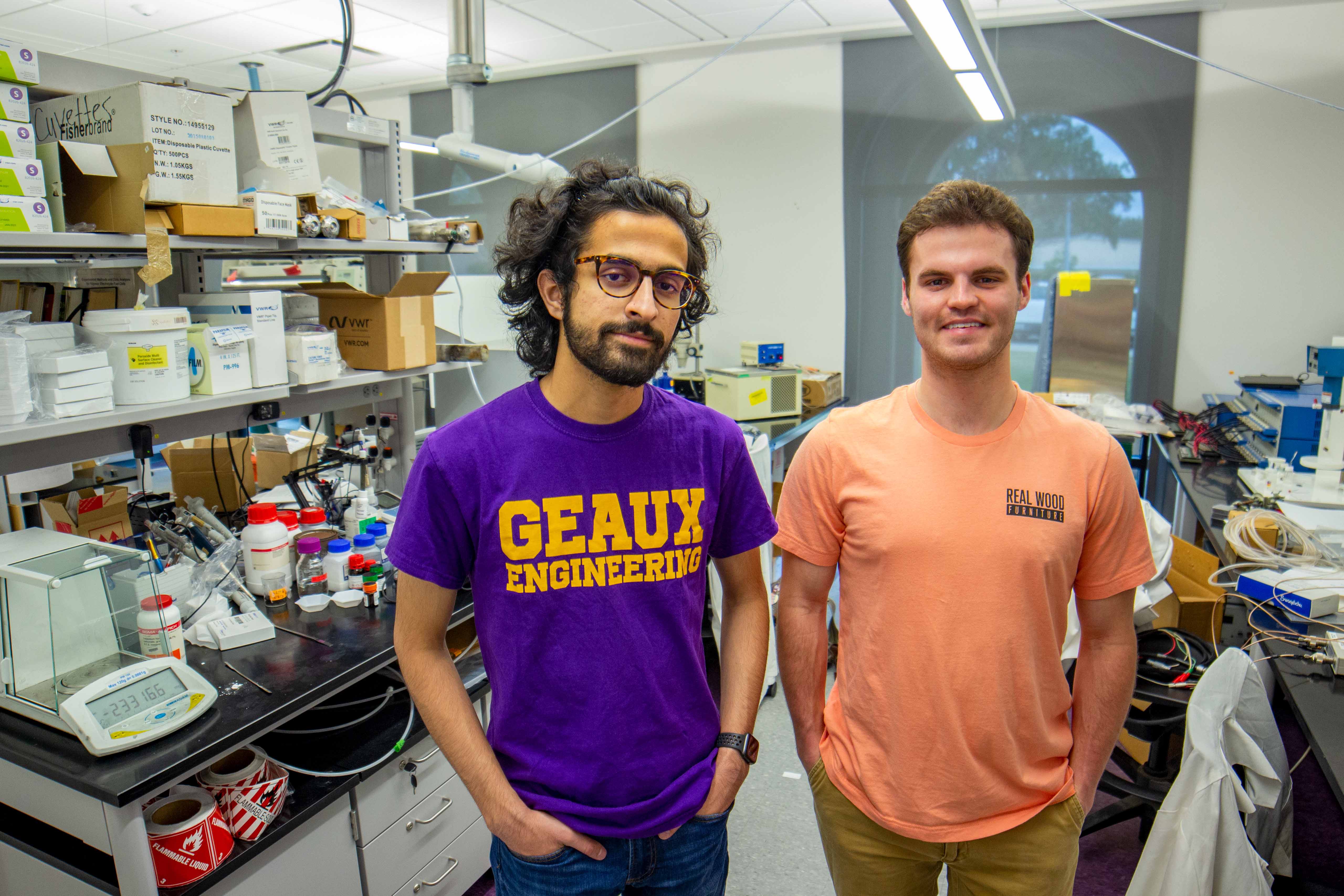Flake, Students Working to Increase Performance in Multi-Chip Packages
February 22, 2022
 BATON ROUGE, LA – How do we transfer data at terabits per second for future applications
like autonomous vehicles, phones, and computers?
BATON ROUGE, LA – How do we transfer data at terabits per second for future applications
like autonomous vehicles, phones, and computers?
That question is at the center of a project—sponsored by the Semiconductor Research Corporation—being carried out by LSU Cain Department of Chemical Engineering Chair and Professor John Flake and undergraduate students Hamood Qureishi and Luke Ieyoueb.
The crux of the problem is that the small copper wires, or interconnects, that connect microprocessors are not great conductors when operated at high frequencies. There are also issues with their mechanical reliability.
“A ‘good conductor’ is challenging when you have small wires, crowded electronics, and very high transmission frequencies,” Flake said. “A lot of the signal power is lost due to the skin effect, where most of the electric current travels near the surface of a wire. In this regard, a smooth surface is desirable, but it isn’t desirable with respect to adhesion and reliability. We are working on processes and materials that would give you great adhesion with smooth interconnects.
“The goal of this project is to provide the basic framework needed for future package-level interconnects. These sort of multi-chip packages will be used in hundreds of applications. Autonomous vehicles are a good example, but these multi-chip packages will likely be used in phones, computers, and many other devices.”
Intel, an SRC member, has already shown interest in the project, Flake said. In fact, this project grew out of previous work he did with the company on removing halides, or chemical compounds that contain halogens, from fluxes used in the packaging process.
Like us on Facebook (@lsuengineering) or follow us on Twitter and Instagram (@lsuengineering).
###
Contact: Joshua Duplechain
Director of Communications
225-578-5706 (o)
josh@lsu.edu